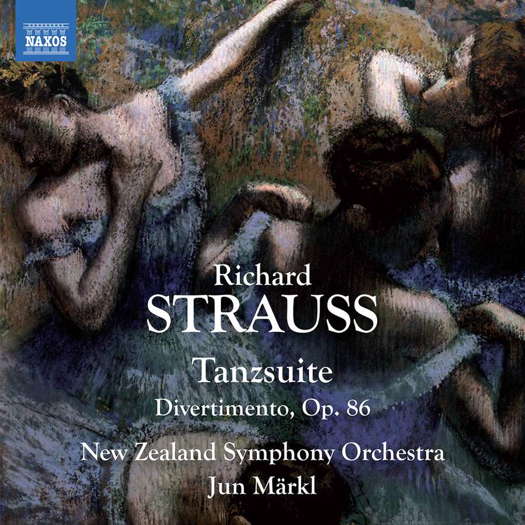- hymn music
- Delius
- Opera North
- Wolfgang Rihm
- Arthaus Musik
- trombone
- Second World War
- Jewish Chamber Orchestra Munich

Strauss from the Antipodes
GIUSEPPE PENNISI reviews rarely-heard François Couperin orchestral transcriptions by Richard Strauss
'... good rendering by the New Zealand Symphony Orchestra under Jun Märkl ...'
This CD has two interesting features: it offers two Richard Strauss works which are seldom performed as well as seldom played in concert hall, and it acquaints the listener with a rarely heard ensemble from the antipodes, the New Zealand Symphony Orchestra.
The choice is clever because the two pieces are not even in the thirty-five CD collection of the Brilliant Classics coffer called Strauss Edition. Furthermore, both pieces are orchestral transcriptions of François Couperin's piano/harpsichord works, but they were composed nearly twenty-five years apart from one another.
This magazine reviewed Couperin's work on 25 September 2020 on the basis of a recent CD rendering by American harpsichordist Jory Vinikour. Quite a few of the same short and nearly quicksilver pieces can now be listened to in a medium size orchestral transcription.
For information about Couperin, I refer to the 25 September review. [Read The Sweetness of Life - Harpsichord music by François Couperin.] Here we focus on Richard Strauss. He was a prolific composer and conductor and explored all the fields of music. The first composition on this CD, Tanzsuite, originated from his appointment as co-director of the Vienna State Opera when the refurbishing of the magnificent Redoutensaal in the Hofburg made it a perfect setting for a new ballet. This happened in 1922, thus after World War I, when Austria was no longer the capital of an Empire but a small Republic. Yet the Austrians, especially the Viennese, longed for their past splendour. What better than providing them with ballet music based on scores composed for the Roi Soleil and the Versailles Court?
The idea was smart and Strauss was a fast worker. The ballet was a prime bill for the 1923 Vienna Carnival. The choreography was by Heinrich Kröller and the Vienna State Opera provided etoile, principal dancers and the corps de ballet. I do not know if the ballet, conceived for a special occasion in a very special place, was ever revived. It does seem that it entered the Vienna State Opera repertory. Recordings are few and far between.
Listen — Richard Strauss: Sarabande (Tanzsuite)
(track 4, 0:00-0:54) ℗ 2020 Naxos Rights (Europe) Ltd :
The New Zealand Symphony Orchestra conducted by respected German conductor Jun Märkl, son of a Japanese pianist mother and a German violinist father, does a very good job in rendering the light and sophisticated Court atmosphere in the dances.
Listen — Richard Strauss: Marsch (Tanzsuite)
(track 7, 0:56-1:45) ℗ 2020 Naxos Rights (Europe) Ltd :
The Divertimento is also based on transcription from Couperin, but it was composed in a very different context. It was conceived in 1940-41, during World War II, at the suggestion of Clemens Krauss, who conducted the first performance at the Bavarian National in Munich in April 1941. Strauss and Krauss were at that time working on an absolute masterpiece, Capriccio, which had its premiere also in Munich in 1942 and had a plot set in France at the time of la guerre des bouffons, when Couperin and Lully's opera-ballets were being replaced by Gluck's lyric tragedies and Pergolesi's comedies in music. Here Couperin is light and sophisticated but Strauss (and Krauss) read his harpsichord works through a veil of nostalgia for a time now bygone.
Listen — Richard Strauss: Les Ombres errantes (Divertimento)
(track 15, 2:30-3:17) ℗ 2020 Naxos Rights (Europe) Ltd :
The same veiled nostalgia pervades Capriccio and the good rendering by the New Zealand Symphony Orchestra under Jun Märkl's baton.
Copyright © 18 January 2021
Giuseppe Pennisi,
Rome, Italy

CD INFORMATION - RICHARD STRAUSS: DANCE SUITE; DIVERTIMENTO
MORE NEW ZEALAND SYMPHONY ORCHESTRA ARTICLES




